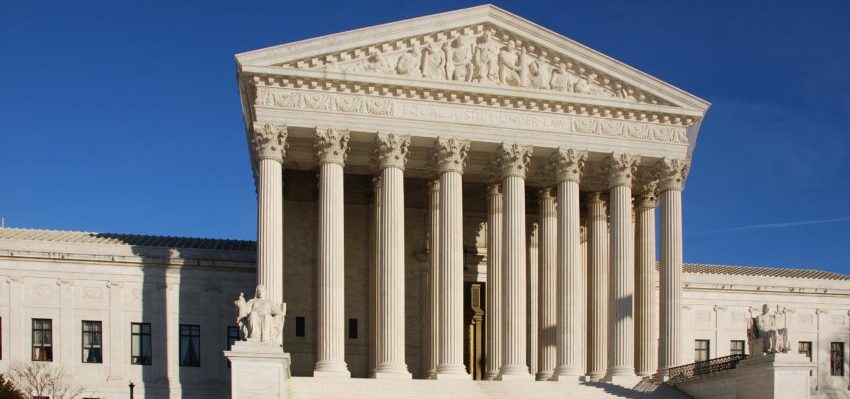 However you slice it, the ruling is a victory for Wisconsin Republicans. The state will not have to redraw its district maps. #wiright #wipolitics Click To Tweet
However you slice it, the ruling is a victory for Wisconsin Republicans. The state will not have to redraw its district maps. #wiright #wipolitics Click To Tweet
MacIver News Service | June 19, 2018
By M.D. Kittle
MADISON – One of the nation’s top election law watchers tells MacIver News Service he’s not surprised the U.S. Supreme Court “took the easy way out” in Wisconsin’s highly anticipated partisan redistricting case.
The high court unanimously held that the challengers to Wisconsin’s Republican majority-drawn legislative map failed to demonstrate they had standing to contest the redistricting plan statewide.
In other words, the 12 Democrat plaintiffs in Gill v. Whitford – commonly referred to as the Wisconsin gerrymandering case – did not show that they had been particularly or individually harmed by the partisan maps, that Democratic votes were wasted.
But the court did not decide on the merits of the case. Instead, it sent the case back to the lower court to allow the plaintiffs another swipe at proving the political boundaries had diminished their vote.
“It’s very clear in this particular case what happened was these individual Democratic voters claimed the statewide legislative redistricting plan violated the constitution because they said it hurt the Democratic Party statewide, and that’s not a concrete injury,” Hans von Spakovsky, legal fellow in the Heritage Foundation’s Edwin Meese III Center for Legal and Judicial Studies, told MacIver News Service Monday on the Vicki McKenna Show.
“They (the plaintiffs) were arguing for proportional representation. They were saying they ought to get as many seats in the state Legislature as Democrats who run for state office, however many votes they get,” he added.
The idea of a constitutional guarantee to proportional representation is simply “foolish,” von Spakovsky said.
In Wisconsin, the Legislature is charged with drawing up the legislative districts after each 10-year census. Republicans swept into power in 2010, giving the GOP the power to put together the redistricting plan. It was immediately challenged by Democrats.
However you slice it, the ruling is a victory for Wisconsin Republicans. The state will not have to redraw its maps.
The plaintiffs saw the case as the vehicle to move the high court to, for the first time, invalidate a voting district because of a partisan gerrymander. They argued that the 2011 district map harmed the Democratic Party’s “ability to convert Democratic votes into Democratic seats in the Legislature.” They asserted Wisconsin Act 43 leaves the Democratic Party politically impotent by “cracking” and “packing” Democratic voters in districts.
The court noted that the plaintiffs’ ultimate standing problem “rests on a failure to distinguish injury from remedy.”
“The plaintiffs argue that their legal injury is not limited to injury that they have suffered as individual voters, but extends also to the statewide harm to their interest ‘in their collective representation in the Legislature,’ and in influencing the legislature’s overall ‘composition and policymaking,’’’ Chief Justice John Roberts, writing for the unanimous court, explained. “But our cases to date have not found that this presents an individual and personal injury of the kind required for Article III standing.”
In fact, the man whose name is on the case for the plaintiffs, Bill Whitford, is a Madison resident and University of Wisconsin-Madison law professor emeritus. He lives in Dane County, an exceptionally liberal county, that overwhelmingly votes for Democrats and is almost exclusively represented by Democrats.
“Born and raised in Madison, Wisconsin, Bill Whitford was an engaged citizen from a very young age thanks to his politically active mother who ‘was head over heels for Adlai Stevenson!’ At 14, he was too young to vote, but not too young to knock on doors and stuff envelopes with his mother. Bill studied at the University of Wisconsin at Madison where he became president of the campus Young Democrats,” Whitford notes in an online biography.
Justice Anthony Kennedy, often regarded as the “swing voter” on the court, had previously said he was looking for a “limited and precise rationale … to correct an established violation of the Constitution in some redistricting cases.” He was looking for a “manageable standard” to strike down so-called extreme partisan gerrymanders.
Gill v. Whitford apparently isn’t that case.
“In the Gill case we still haven’t gotten to that point because the court said, ‘We’re not going to make a decision on that,’” von Spakovsky said. “‘We’re sending it back down to the lower courts so the plaintiffs can establish standing, then we might consider it.’”
That’s a big if.
The plaintiffs will have to litigate their case again and hope it comes back to the Supreme Court. By then, “swing vote” Kennedy, soon to turn 82, might not be on the court. And his replacement might be a conservative who, like the others on the court, see partisan gerrymandering as a constitutional exercise.
“Look, there’s always going to be politics involved in drawing new districts,” von Spakovsky said. “At what point do you say too much politics becomes a constitutional violation? It’s kind of like Goldilocks – it’s okay to have a little bit of politics but not too much politics. Where the heck are you going to draw the line?”